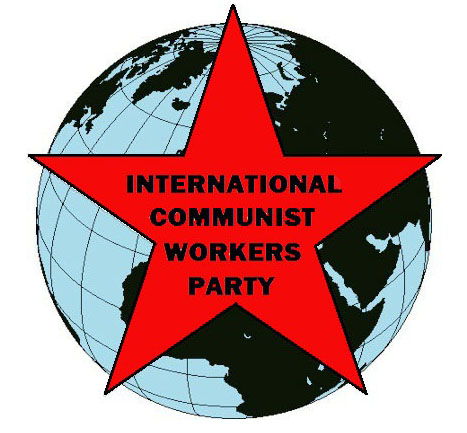
 |
FIGHT FOR COMMUNISM! |
International Communist Workers Party | |
|
| |

Previous articles described the internal struggles of the communist movement about nationalism and alliances with “national” capitalists. This final article in the series describes how ICWP came to recognize that nationalism is always wrong for the working class, and that workers always lose when they try to ally with capitalists.
In part IV, (available here) we saw that until the 7th Congress of the Communist International (CI) in 1935, communists in China, India and other undeveloped or colonial countries fought the bourgeoisie. After that Congress, the world communist movement turned sharply to the right. It allied with capitalists and gave up on the goal of the dictatorship of the working class and rural masses.
In 1943 the CI was dissolved. After the 2nd World War, French and Italian communists joined capitalist governments until they were kicked out. In the 1950s, Soviet leaders rejected the dictatorship of the working class. They claimed that revolution was no longer necessary and that socialism could get along peacefully with imperialism.
Despite this complete betrayal of the communist movement by the USSR, there were two very important developments in the decades after 1950s: the surge of “national liberation” movements in former colonies and a deep ideological split between the USSR and Communist Party of China (CPC).
From the ‘50s on, dozens of wars against imperialist domination took place in Africa, Asia and Latin America. Communists took part in these struggles, and sometimes led them. All of them amounted to alliances with local capitalists of colonies or semi-colonies. Some of these struggles gained world-wide support and inspired millions, as was the case with Vietnam.
In all of these movements, however, capitalists eventually triumphed in one way or another. In India, which did not have an armed struggle, the British divided their colony and handed over the pieces to local capitalists. In Indonesia, communists allied with capitalist leader Sukarno, but the Indonesian capitalists resorted to fascism and murdered hundreds of thousands of communists and their supporters. Long bloody struggles in many African countries only brought capitalists to power there. Civil wars in Central America left capitalists in charge.
The only apparent exception to this pattern was China, where the communist-led movement defeated and drove out the nationalist Guomindang and declared the People’s Republic of China (PRC) in 1949. This movement was an alliance of classes, justified by nationalism. It included workers, peasants, small businesses and the “national bourgeoisie,” Chinese capitalists who were said to be independent of foreign capitalists. These capitalists played a major role in production in the early years of the PRC. Eventually the government bought them out. However, they still received profits from their old businesses. By the late 1950s, these capitalists, joined by rich peasants, highly paid party leaders and technical experts, and even some former landlords were the top dogs in new China. Far from communism, new China actually realized the capitalist program of Sun Yatsen, the founder of the Guomindang: national independence, land reform, and beginnings of industrial development.
By 1962 Mao warned that pro-capitalist forces in the party were fighting to prevent any advance beyond capitalism: “We have inherited the national bourgeoisie and their intellectuals, as well as the sons and daughters of the landlord class…They remain concealed until opportunities become ripe, which they then seize.”[ 1 ] He warned that “revisionists,” pro-capitalist forces pretending to be communists, “wanted to overthrow us. If we paid no attention and conducted no struggle, China would become a fascist dictatorship in either a few or a few dozen years.”[ 2 ]
Throughout the 1960s, the Communist Party of China (CPC) fought the class struggle against Soviet and Chinese revisionism. This fight inspired many new communist parties across the world. These parties rejected Soviet revisionism but borrowed a nationalist approach from the CPC. When Mao finally launched the Cultural Revolution, the wrong lines that the CPC had followed for years took their toll. These mistakes included promoting nationalism and a socialist wage system that pitted workers against each other. The divided Chinese working class was defeated and the capitalist forces were fully in charge by 1980, as Mao had predicted.
The capitalist victories in all the “national liberation” struggles, and the mass struggles against revisionism in China made it possible for us to learn two critical lessons. The first is that nationalism is always an enemy of the communist movement, and capitalists always win in nationalist movements. The second is that communists must reject socialism and its wage system and fight directly for communism.
ICWP makes the fight for communism and against all forms of nationalism, racism and sexism our daily struggle. Join us! We have a world to win.
[ 2 ] Mao Zedong, February 3, 1967, quoted in Qiang Zhai, "Mao Zedong and Dulles' "Peaceful Evolution" Strategy: Revelations from Bo Yibo's Memoirs," Cold War International History Project Bulletin, Winter 1995-96, pp. 228 – 230.